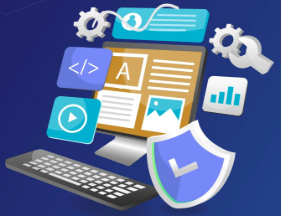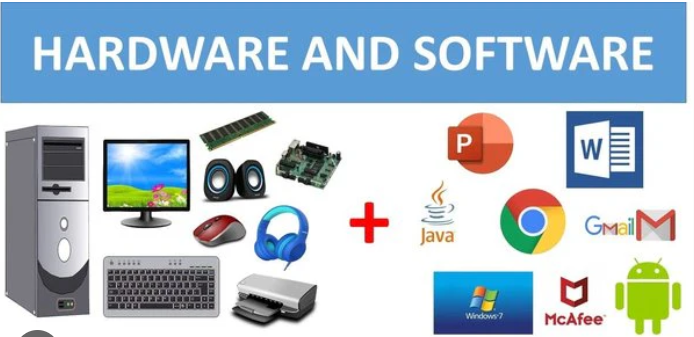
Application Software Explained: From Word Processors to Web Browsers
In today’s digital world, computers and smartphones wouldn’t be very useful without the software that lets us do everyday tasks—like typing a document, browsing the web, or playing music. This is where application software comes in. While system software runs the device in the background, application software helps users perform specific tasks. In this post, we’ll explore what application software is, its types, real-life examples, and how it differs from system software.
What is Application Software?
Application software is a type of computer program designed to help users perform a specific task or set of tasks. It runs on top of the operating system (OS) and relies on the system software to function properly.
Whether you’re editing photos, watching videos, writing emails, or calculating numbers—application software makes these actions possible. Without it, your computer or mobile device would be just a blank system interface with no user functionality.
Key Characteristics of Application Software
- User-Centric: Created for end-users to perform tasks.
- Task-Specific: Designed for specific uses like writing, drawing, browsing, or playing games.
- Requires System Software: Needs an OS to run.
- GUI-Based: Usually features a graphical user interface (GUI) for ease of use.
- Customizable: Often allows personalization (e.g., themes, settings, plugins).
Types of Application Software (With Examples)
1. Word Processors
- Purpose: Creating, editing, and formatting documents.
- Examples: Microsoft Word, Google Docs, LibreOffice Writer.
2. Web Browsers
- Purpose: Accessing and navigating the internet.
- Examples: Google Chrome, Mozilla Firefox, Microsoft Edge, Safari.
3. Media Players
- Purpose: Playing audio and video files.
- Examples: VLC Media Player, Windows Media Player, iTunes.
4. Spreadsheet Software
- Purpose: Performing calculations, data analysis, and visualization.
- Examples: Microsoft Excel, Google Sheets, LibreOffice Calc.
5. Presentation Software
- Purpose: Creating slide-based presentations.
- Examples: Microsoft PowerPoint, Google Slides, Keynote.
6. Graphics and Design Software
- Purpose: Editing images, creating artwork, or designing graphics.
- Examples: Adobe Photoshop, Canva, CorelDRAW.
7. Communication Software
- Purpose: Messaging, video calling, and collaboration.
- Examples: Zoom, Microsoft Teams, Slack, WhatsApp.
8. Gaming Software
- Purpose: Entertainment and gameplay.
- Examples: Fortnite, Minecraft, Among Us, PUBG.
9. Database Software
- Purpose: Creating, managing, and storing data.
- Examples: Microsoft Access, MySQL Workbench, Oracle DB.
10. Educational Software
- Purpose: Learning and skill development.
- Examples: Duolingo, Khan Academy, TypingClub.
Application Software vs System Software
| Feature | Application Software | System Software |
| Purpose | Performs user-specific tasks | Manages hardware and system resources |
| Examples | Word, Excel, Chrome, Photoshop | Windows, macOS, Linux, BIOS |
| Runs With | Requires system software to run | Can run independently to support apps |
| User Interaction | High – direct user interface | Low – works in the background |
| Installation | Installed as needed by the user | Usually pre-installed with system |
Why Is Application Software Important?
- Boosts Productivity: Tools like word processors and spreadsheets streamline work.
- Enhances Communication: Messaging apps, email clients, and video calling software enable global connectivity.
- Enables Creativity: Graphic design and video editing software help bring ideas to life.
- Supports Learning: Educational apps and e-learning platforms promote knowledge sharing.
- Provides Entertainment: Games and media players offer leisure and relaxation.
How Application Software Works with System Software
Application software doesn’t operate in isolation. It communicates with system software, especially the operating system, to access hardware resources like memory, processing power, and storage.
Example:
When you save a Word document, the application (Word) sends a request to the OS, which interacts with the file system and storage hardware to save your file.
Conclusion
Application software is the bridge between a user and the machine’s capabilities. It’s the part of your device that lets you do everything from typing assignments to watching movies. Understanding it not only helps in choosing the right tools for your tasks but also gives insight into how modern computing works.
Whether you’re a student, professional, or casual user, application software plays a crucial role in your daily tech life.


